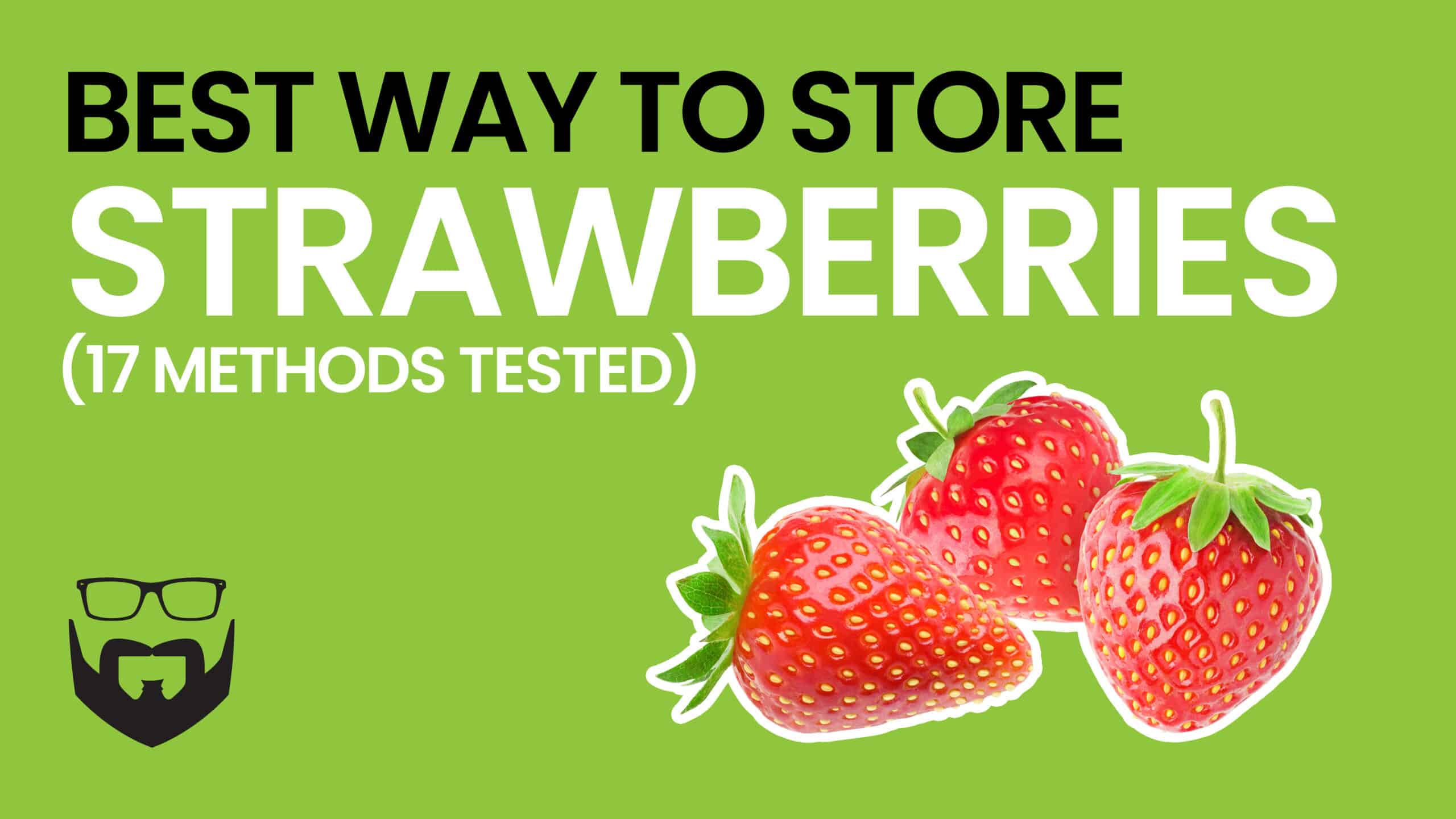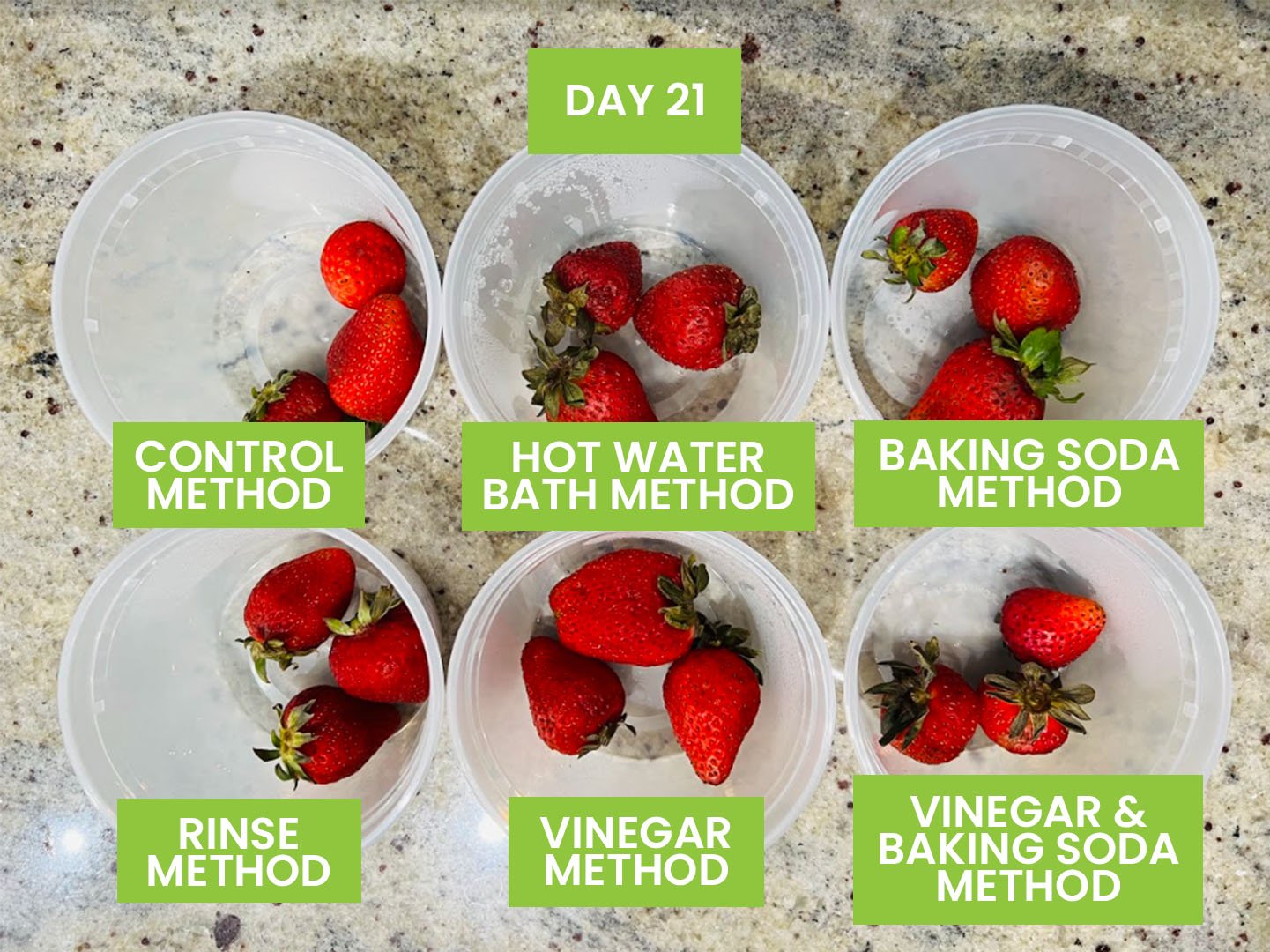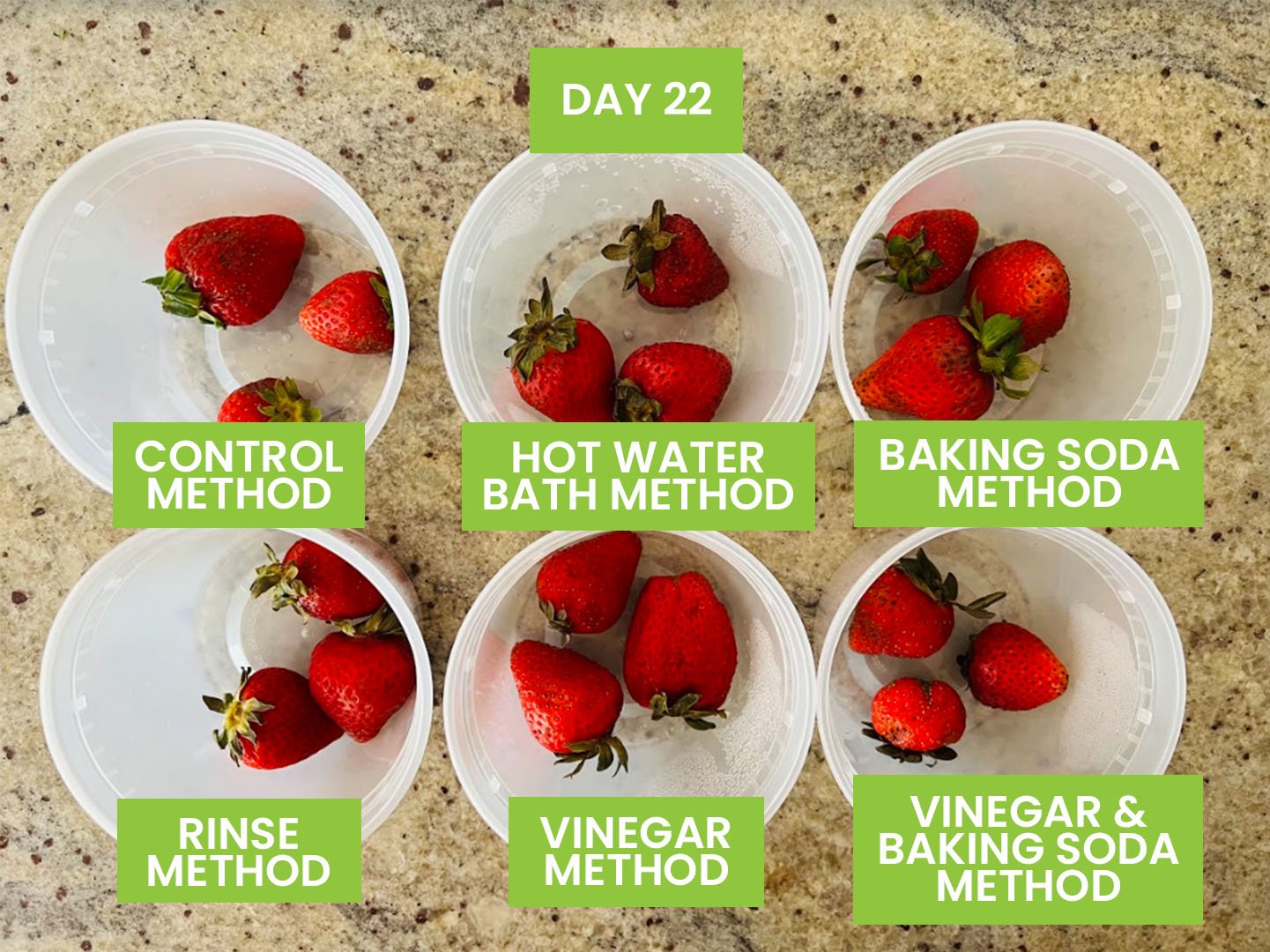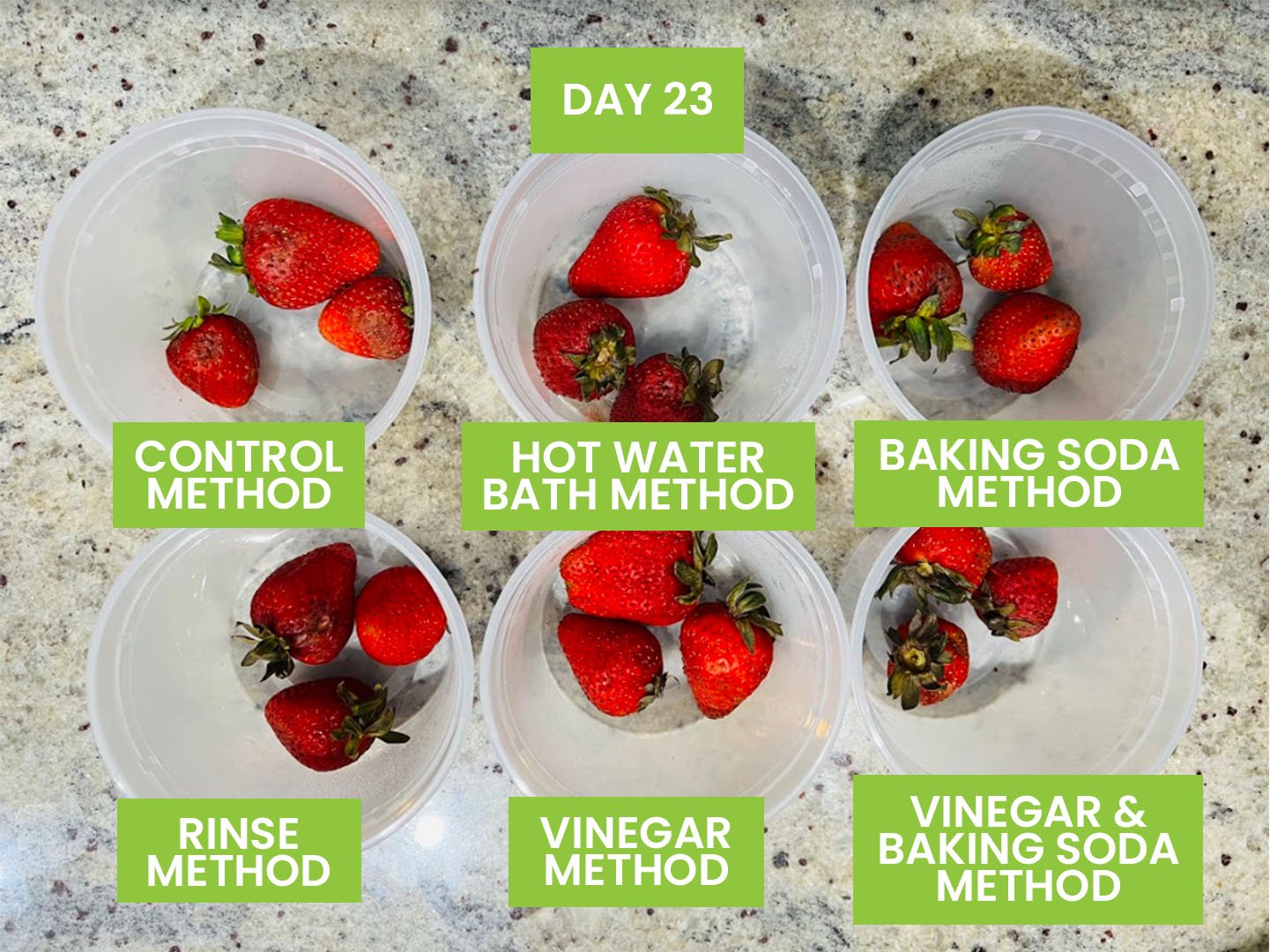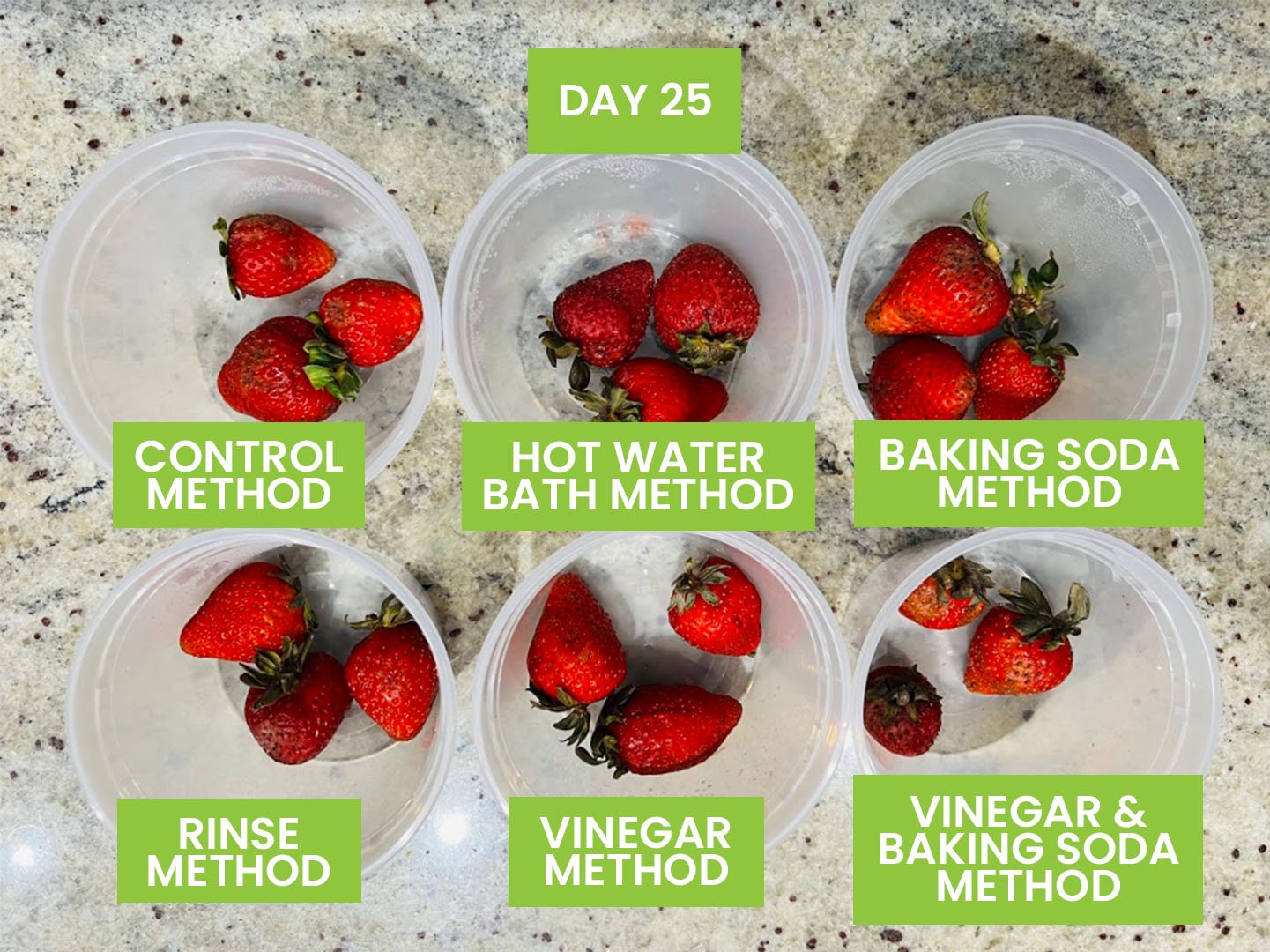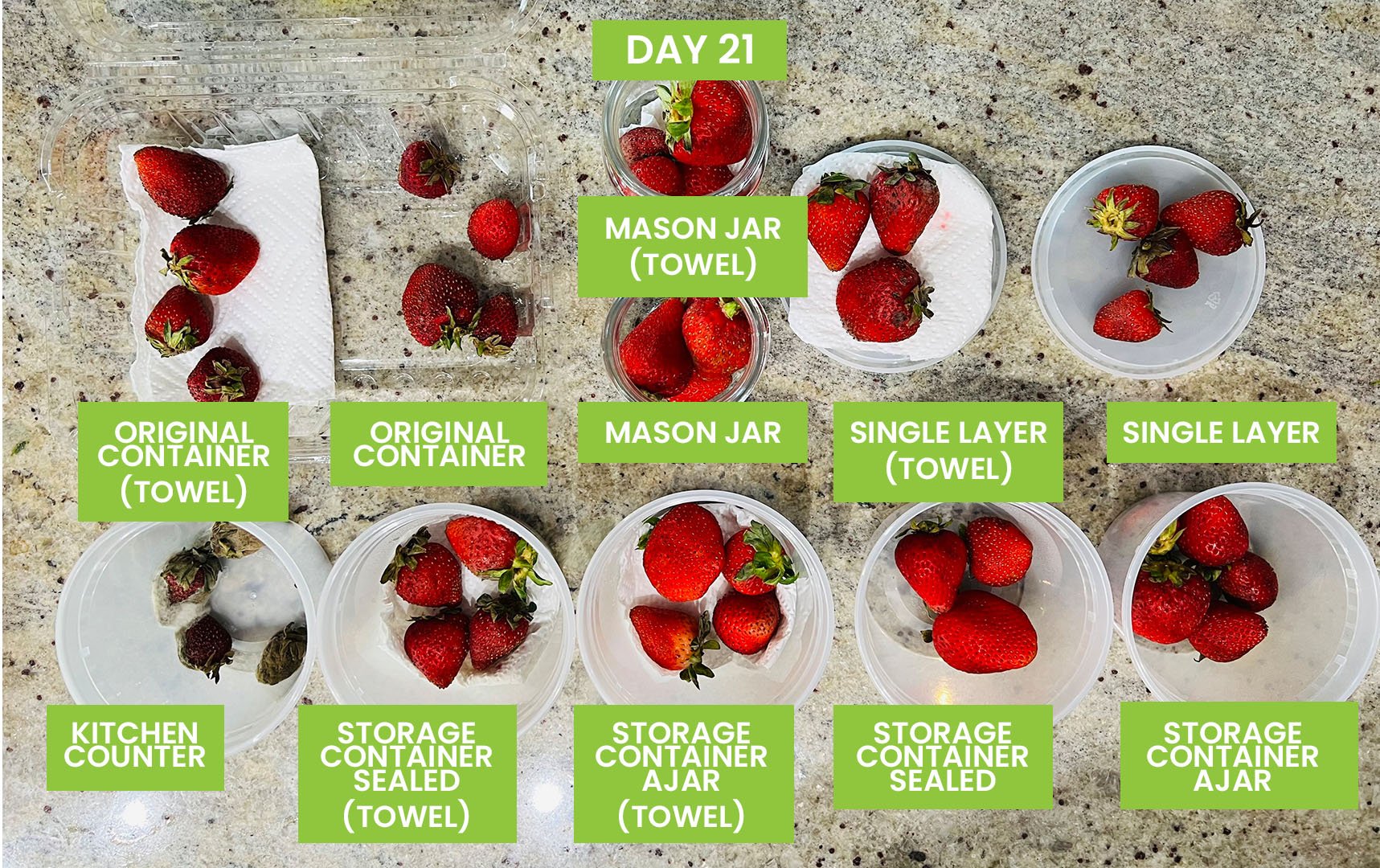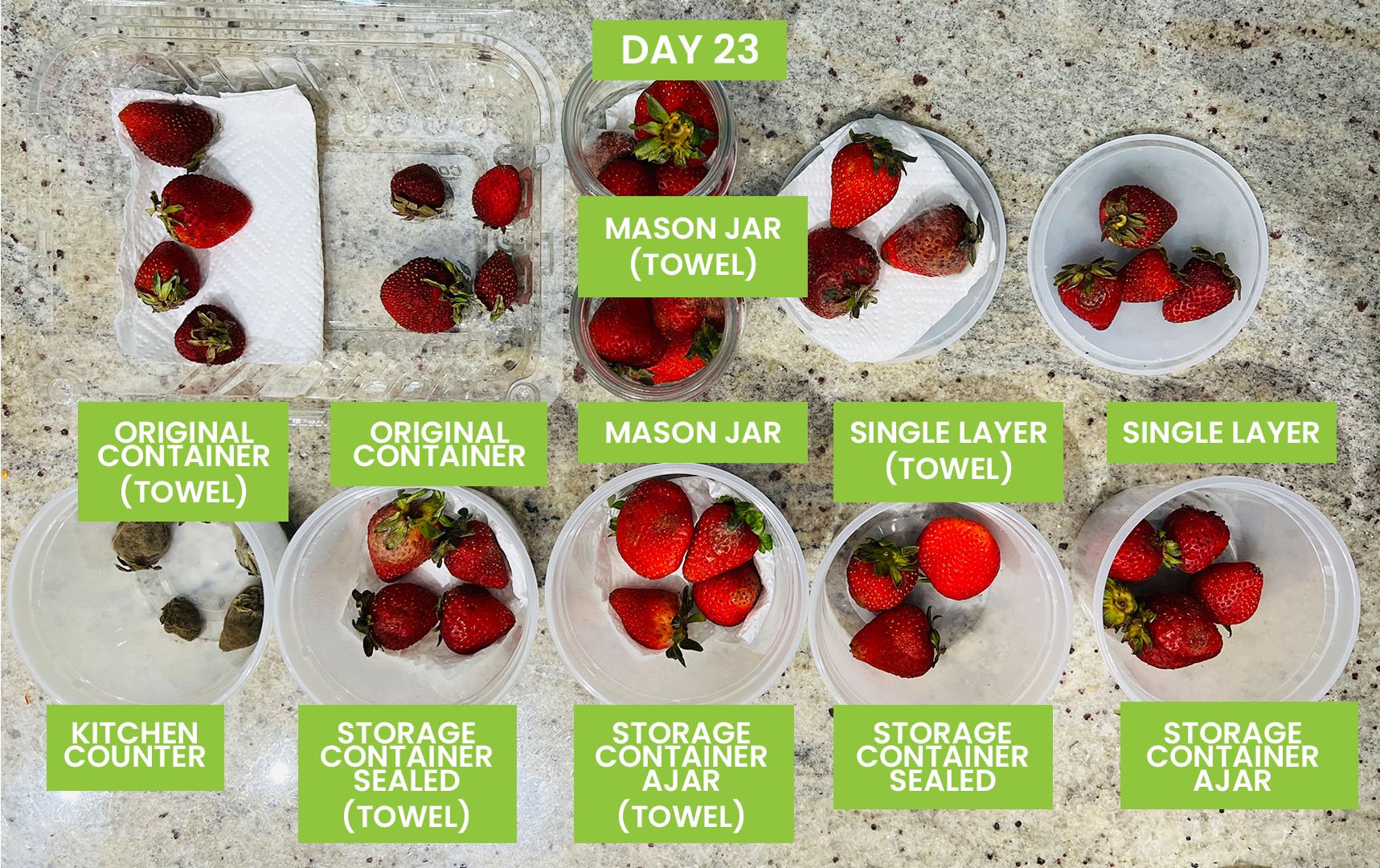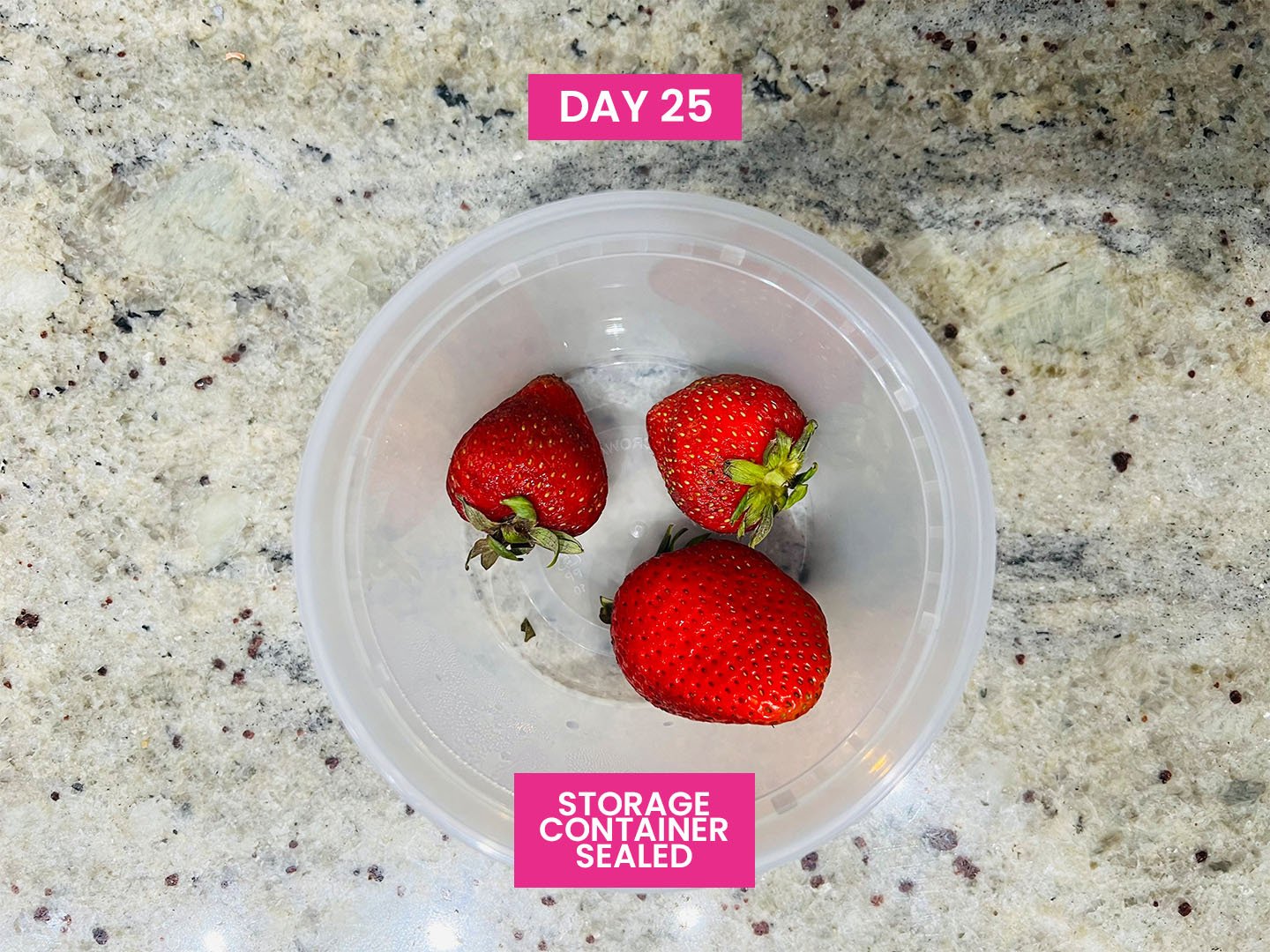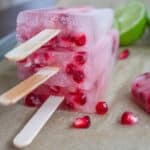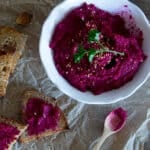Here’s the best way to wash and store fresh strawberries. I tested 17 methods from baking soda to vinegar and different food storage methods like the mason jar hack.
I’ve been doing food storage videos since I started food blogging, and this post was inspired by my 2012 video on How to Store Berries for Weeks. Well, that and my very first video in this format, where I put all the methods to the test. I did so here, testing 12 storage methods for cut avocado.
Are you ready to science?! The winning method was able to keep fresh strawberries mold-free and ready to eat for weeks.
And BT-Dubs, California grows almost 90% of all US grown strawberries which are all hand-picked all year to ensure the highest quality so be sure to thank our farmers and growers.
How to Buy Strawberries
No storage method can help you if you bring home crappy berries. Sorry, Carol! Choose strawberries that are shiny with a bright red color and free from bruises, blemishes, and of course, mold. Take a look at the bottom of the carton if you can. I even open it up. Yes, I am that guy.
How to Keep Strawberries Fresh
When it comes to storing strawberries, the internet is swimming with advice. A lot of it is good. A lot of it is like taking horse pills for COVID.
Storing fresh berries comes down to two main things. First, preparing the berries for storage. That is, washing them or not. Secondly, how they are stored. Moisture is the enemy of most refrigerated produce.
How they are stored will either help or hurt this. So we are going to break up the experiment accordingly.
How to Wash Strawberries
From the ground it was harvested to how it was transported, produce is filthy AF. Some of the washing methods aim to destroy bacteria and mold spores that eventually spoil the fruit. The idea is that by removing these bad actors, strawberries will stay fresher longer.
You don’t need a fancy vegetable wash to clean your berries for eating. Baking soda is more than enough, usually. But we tried out six different methods for keeping these berries around the longest. Science!
After the berries were washed, they were fully dried. This is extremely important. You don’t want to introduce any moisture when storing the berries. You can easily dry them in a few different ways.
- Let them air dry.
- Pat them dry with a towel.
- Run them in a salad spinner lined with a towel.
- Blow-dry them gently with a blow dryer.
I am a fan of the salad spinner method, but not everybody got one. That’s ok. The key is that they are dry. You do you.
Control Method
For the control method, I ain’t did a thing. We just left the berries as they are from the store.
Rinse Method (Water Bath)
This is the second easiest method to execute and probably the most common. Place the berries in a colander and rinse them thoroughly under water.
Hot Water Bath Method
This is the first method where we will try to kill the bacteria and mold spores. Soak berries in water that is 140 degrees F for 60 seconds.
Vinegar Bath Method
Like the previous method, this one is about killing bacteria and mold dead. Soak berries in a vinegar solution that is 3 parts water and 1 part white vinegar. Let soak for 15 minutes.
Like the previous method, this one is about killing bacteria and mold dead. Soak berries in a vinegar solution that is 3 parts water and 1 part white vinegar. Let soak for 15 minutes.
Baking Soda Method
Similar to the method above but with baking soda, which has been known to clean produce better than bleach!
Soak berries in water with baking soda for 15 minutes. You want 1 tablespoon of baking soda for every 4 cups of water—no need to rinse them after.
Vinegar & Baking Soda Method
Can you double up on these powerful natural cleaners? When I did my first video on this, I combined the two. Yes, they can cancel each other out, but only to a degree. Volume matters.
If I add 1 teaspoon of vinegar to 800 pounds of baking soda, do they cancel each other out? Exactly!
For this one, take a solution of 3 parts water and 1 part vinegar and add 1 teaspoon of baking soda to the mixture. Then add in the berries and let them soak for 15 minutes.
The Timeline
So a few things about this test. To standardize the storage method, I stored them all in similar containers. Once they were washed and thoroughly dried, they were checked on regularly. Here are the results…
For the most part things were the same up to Day 14 and not a ton of change until about Day 21. That is where things started to turn.
Day 21:
- Control Method: Still good.
- Rinse Method: Signs of decay.
- Hot Water Bath Method: Most signs of decay.
- Vinegar Method: Looking the best. No decay.
- Baking Soda Method: Signs of decay.
- Vinegar & Baking Soda Method: Some signs of decay.
Day 22:
- Control Method: Signs of decay.
- Rinse Method: Signs of decay.
- Hot Water Bath Method: Most signs of decay.
- Vinegar Method: Looking the best.
- Baking Soda Method: Signs of decay. No decay.
- Vinegar & Baking Soda Method: Some signs of decay.
Day 23:
- Control Method: Lots of decay.
- Rinse Method: Lots of decay.
- Hot Water Bath Method: Lots of decay.
- Vinegar Method: Looking the best. No decay.
- Baking Soda Method: Signs of decay.
- Vinegar & Baking Soda Method: Signs of decay.
Day 25:
- Control Method: Lots of decay.
- Rinse Method: Lots of decay.
- Hot Water Bath Method: Lots of decay.
- Vinegar Method: Small signs of decay.
- Baking Soda Method: Signs of decay.
- Vinegar & Baking Soda Method: Lots of decay.
The Winner is…
The 3:1 with water and vinegar was the clear winner. I think these berries could have lasted at least another week or longer. They were plump, showed very little decay in any meaningful way. Perfect for smoothies or shortcake.
I was surprised how the control group held up. The baking soda and the combo of vinegar and baking soda came in second. I feel good about this, as the combo was my method from back in 2019.
I don’t have any scientific proof on this next part. This is just my analysis based on looking at food all day long every day 4EVER. The rinsed berries looked like they never got dry enough. Even though I dried everything the same. The hot water bath seemed like the berries were cooked. It didn’t show at first but eventually they looked like roasted berries.
How to Store Strawberries
Now onto the second part of this experiment, storing whole berries. There are a couple of things to note about strawberries that determined what methods I tried. For example, they like to be very cold, around 32 degrees F, they like humidity, and they are not sensitive to ethylene gas.
For those reasons, no open container methods were tested. But because moisture is the enemy here, I felt it was worth testing strawberries in both sealed containers and those with the lid slightly ajar. Depending on your fridge, this might be a complete nuance, but hey, science is fun!
Lastly, also due to moisture, I tested the methods with and without the containers being lined with a towel. All of the methods were tested using strawberries that were washed in baking soda. I chose this without knowing the winner from above.
Oh, one more thing. I removed any bad berries before testing these methods.
Kitchen Counter
I didn’t expect berries to last too long stored this way, but I thought what a great way to appreciate modern conveniences like refrigeration.
Original Container
The berries, after the baking soda wash, were placed back in their original packaging, which is a plastic clamshell container with some holes for air. I tested the original container in two different ways:
- The original container without a paper towel.
- The original container lined with a paper towel.
Storage Container
This method involves food storage containers like tupperware. For this, glass containers that have a silicon air locking seal were used. The following methods were tried:
- Storage container sealed without a paper towel.
- Storage container sealed and lined with a paper towel.
- Storage container with the lid ajar without a paper towel.
- Storage container with the lid ajar and lined with a paper towel.
Mason Jar
Next up is the current internet favorite. I believe half of the appeal here is the mason jar. From salads to overnight oats, these things are trendy AF. And seeing gorgeous berries stacked up inside doesn’t hurt. Sealed mason jars were tested as follows:
- Mason jar without a paper towel.
- Mason jar lined with a paper towel.
Single Layer
This method is not as popular as some of the above ones, but I come across it from time to time. Now it’s time for the Strawberry Thunderdome! One berry enters… yadda yadda. This is berries spread out in a single layer on a tray or plate and covered as so:
- Single-layer tray without a paper towel.
- Single-layer tray lined with a paper towel.
The Timeline
Like above, things were the same up to Day 14 and not a ton of change until about Day 21. That is where things started to turn.
Day 21
- Kitchen Counter: Moldy.
- Original Container: Signs of decay.
- Original Container (towel): Signs of decay.
- Storage Container Sealed:. Still good.
- Storage Container Sealed (towel): Signs of decay and mold.
- Storage Container Ajar:. Signs of decay.
- Storage Container Ajar (towel): Still good.
- Mason Jar: Still good.
- Mason Jar (towel): Still good.
- Single Layer: Signs of decay.
- Single Layer (towel): Signs of decay.
Day 22
- Kitchen Counter: Gross AF.
- Original Container: Signs of decay.
- Original Container (towel): Signs of decay.
- Storage Container Sealed:. Still good.
- Storage Container Sealed (towel): Signs of decay and mold.
- Storage Container Ajar:. Signs of decay.
- Storage Container Ajar (towel): Still good.
- Mason Jar: Signs of decay.
- Mason Jar (towel): Signs of decay.
- Single Layer: Signs of decay.
- Single Layer (towel): Signs of decay and mold.
Day 23
- Kitchen Counter: Gross AF.
- Original Container: Lots of decay.
- Original Container (towel): Lots of decay.
- Storage Container Sealed:. Still good.
- Storage Container Sealed (towel): Signs of decay and mold.
- Storage Container Ajar:. Lots of decay.
- Storage Container Ajar (towel): Signs of decay.
- Mason Jar: Signs of decay and mold.
- Mason Jar (towel): Signs of decay and mold.
- Single Layer: Signs of decay.
- Single Layer (towel): Signs of decay and mold.
Day 25
- Kitchen Counter: Gross AF.
- Original Container: Lots of decay.
- Original Container (towel): Lots of decay and mold.
- Storage Container Sealed:. Still good.
- Storage Container Sealed (towel): Signs of decay and mold.
- Storage Container Ajar:. Lots of decay and mold.
- Storage Container Ajar (towel): Signs of decay and mold.
- Mason Jar: Lots of decay and mold.
- Mason Jar (towel): Lots of decay and mold.
- Single Layer: Signs of decay and mold.
- Single Layer (towel): Signs of decay and mold.
The Winner is…
The winner here is storing the berries in a sealed container without a towel. Over the years, I have done it with and without a towel and with and without the lid ajar. But a sealed container with no towel seems to be the winner. I think these berries could have lasted at least up to 2 weeks more based on their state and the trajectory of the other berries.
I was surprised the towel did not work out. When it comes to greens like spinach, a towel is the thing that makes them last up to 3-times longer. Here it seemed to work against the berries in the long run. Outside of the container with the lid ajar, most were pretty gross by the end.
The counter, original container, and trays all performed how I expected. Unless you wash the original container, the nasty stuff is still there. I didn’t expect any of these methods to do well.
I was most curious about the mason jar. I have been seeing that hack go around for a while. I have tried it a few times myself with no success. No matter the jar size, moldy berries. So I was wondering if I would be proved wrong or the Internetz would. Screw you, Internetz!
Best Way to Store Strawberries
So here is the TL;DR. The best way to store berries is to wash them in a solution of 3 parts water and 1 part vinegar. Soak them in the solution for 15 minutes. Do not rinse the berries. Dry them completely. You can use a salad spinner or a blow dryer or whatever. But get them dry! Then store them in a clean sealed container with a bit of room in the fridge. Stored this way, your berries could last for up to a month!
How to Freeze Strawberries
Not going to get to the berries in time? Freeze ’em! Lay them out on a lined baking sheet and place them in the freezer for at least 4 hours. I suggest freezing them how you plan to use them. That is, cut off the tops or slice and dice them. Once frozen, transfer to a freezer-safe container for storage. They’ll keep for 12 months.
How to Eat Strawberries
Ripe and ready-to-eat strawberries are fragrant, sweet, and have a slight acidity to them. To fully enjoy their deliciousness, I suggest enjoying them at room temperature. Cold foods are not as intense flavor-wise because of how our tongues work.
You can also eat the leaves of the strawberries. You may not want to, but they can be used as a way to fight food waste. You can blend them in homemade pesto and smoothies or toss them in salads.
